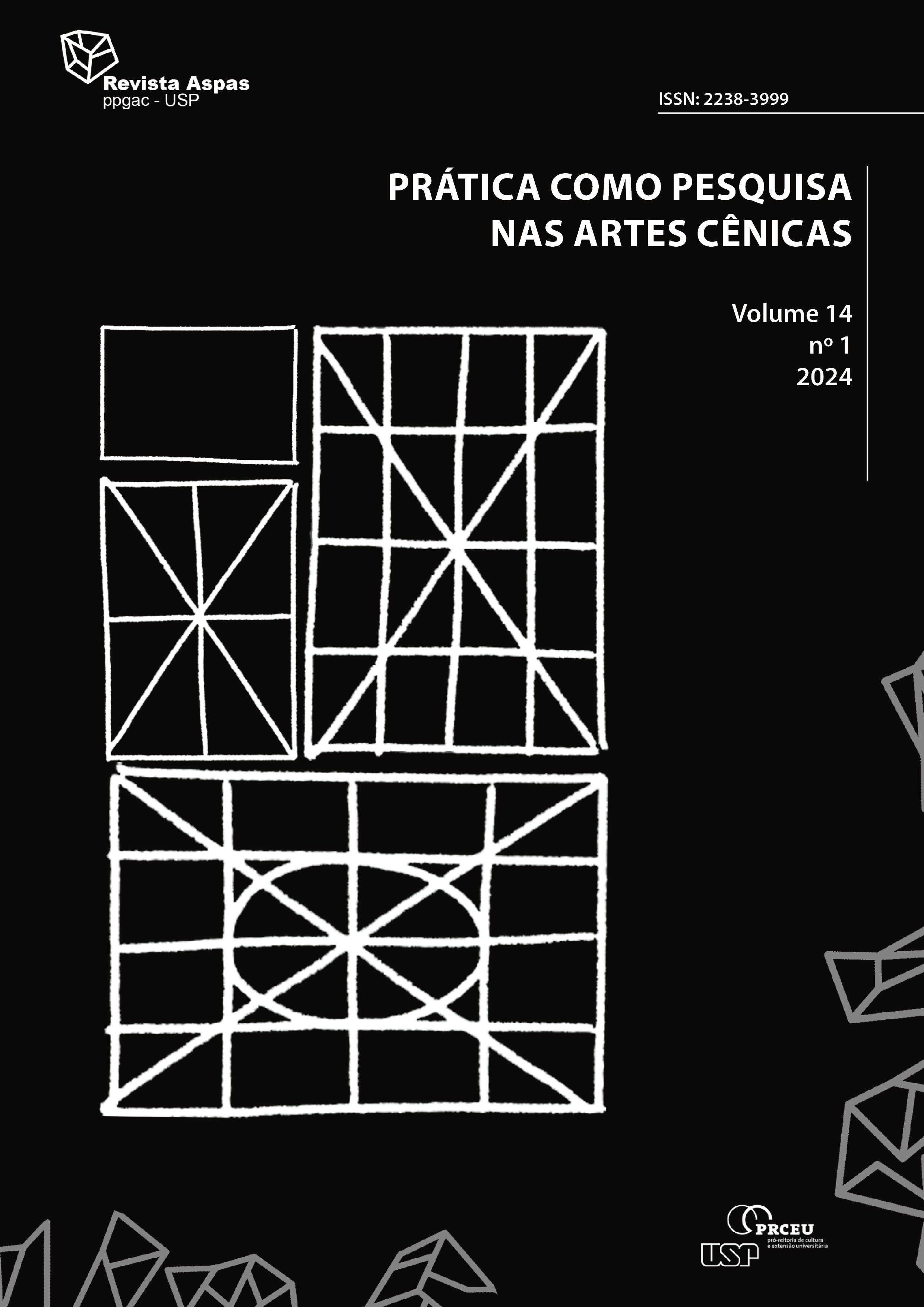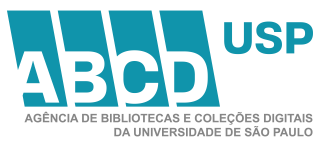We speak to you in chorus because no longer can anyone talk for themselves. The search for a research/creation methodology beyond the anthropocentric in vocal practices for the theatre scene
DOI:
https://doi.org/10.11606/issn.2238-3999.v14i1p159-177Keywords:
Post-Humanism, Practice as Research, Theatre, VoiceAbstract
This article reveals a selected part of the research process of the piece We speak to you in chorus because no longer can anyone talk for themselves, which premiered in Santiago de Chile on April 31, 2022. The focus is placed on the breakdown of a method of creation and acting composition based on the middle field (Byron, 2018). Through that premise, the questions that led to this project are addressed and were brought into play, to question the deep-rooted belief in the performer as a bearer and distributor of the voice in and for the theatrical scene. In this order, this investigation addresses the relationship of the voice with the body through an expanded conception of the latter, which included all matter – organic and inorganic – as a vibrant vitality (Bennett, 2022). As a result of this research, a methodological approach has been proposed through three vertices of systematization: (1) the replacement of the semantic and Aristotelian order of the theater; (2) the simultaneity of materialities in favor of the logic of the whole; and, (3) the examination and disarticulation of the expressive behavior of the human voice. From here, a critique of the affective agency of the voice in the performing arts is ventured, under the order and domain of language.
Downloads
References
Aros, L. Ensamblaje-En-Voz; Prácticas vocales expandidas en las artes escénicas. Tesis (Doctorado en Artes / Estudios y Prácticas Teatrales) Pontificia Universidad Católica de Chile. Repositorio institucional https://repositorio.uc.cl/handle/11534/84931 2024.
Aros, L. En coro te hablamos porque nadie puede hablar ya por sí mismo. [Obra inédita presentada para su publicación] 2022.
Bennett, J. Materia Vibrante. Ed. Caja Negra, Buenos Aires, Argentina, 2022.
Bieletto, N. Paisajes sensoriales, memorias culturales y la pobreza como emblema: el caso de las carpas de barrio en la Ciudad de México (1900-1930). En Domínguez y Zirión (coordinadores) La dimensión sensorial de la cultura, 2017, pp. 57- 79.
Bryon, E. Active aesthetic, Knowledge Performing. Performing Interdisciplinarity, Working Across Disciplinary Boundaries Through an Active Aesthetic. Ed. Experience Bryon. Routledge. Londres, Inglaterra. 2018, pp. 5-57.
Candy, L. (2006). Practice Based Research: A Guide. Creativity and Cognition Studios Report. V1.0, (2006).
https://www.creativityandcognition.com/wp-content/uploads/2011/04/PBR-Guide-1.1-2006.pdf (último acceso, abril 2024).
Díez Gómez, A. Introducción, Quebraderos para una investigación artística basada en la práctica. Piscina. Investigación y práctica artística. Maneras y ejercicios. Ediciones laSIA, Bilbao-España. 2029, pp. 9-31.
Tutivén R., Cib. H., Mercedes, M. Las Interfaces Como Ensamblajes Vibrantes: Cuerpos, Artefactos Y Naturaleza». Hipertext.Net, n.º 25, noviembre de 2022, pp. 43-53.
Vilar, G. Disturbios de la razón. La investigación artística. Madrid: Machado Grupo de Distribución S.L, 2021.
Wesseling, J. Investigación Artística en la Academy of Creative and Performing Arts, Universidad de Leiden. Piscina. Investigación y práctica artística. Maneras y ejercicios. Ediciones laSIA, Bilbao-España. 2019, pp. 159-168.
Downloads
Published
Issue
Section
License
Copyright (c) 2024 Revista Aspas

This work is licensed under a Creative Commons Attribution 4.0 International License.
Whenever publishing material referring to the article published in the aSPAs Journal, the authors commits to mentioning such publication as follows:
“This article was originally published by aSPAs Journal volume (insert the volume), number (insert the number) in the year (insert the year) and can be accessed in: http://revistas.usp.br/aspas"







